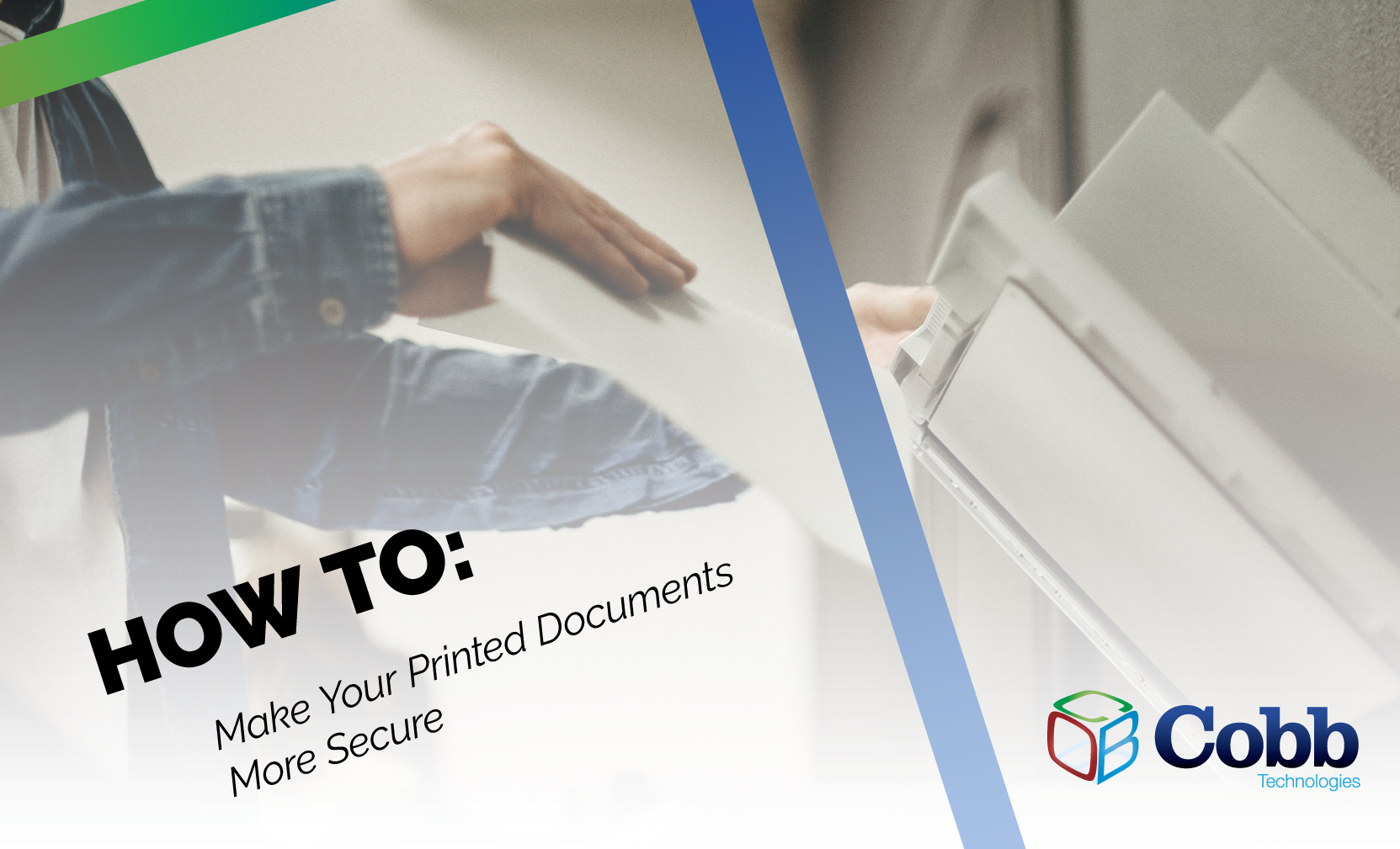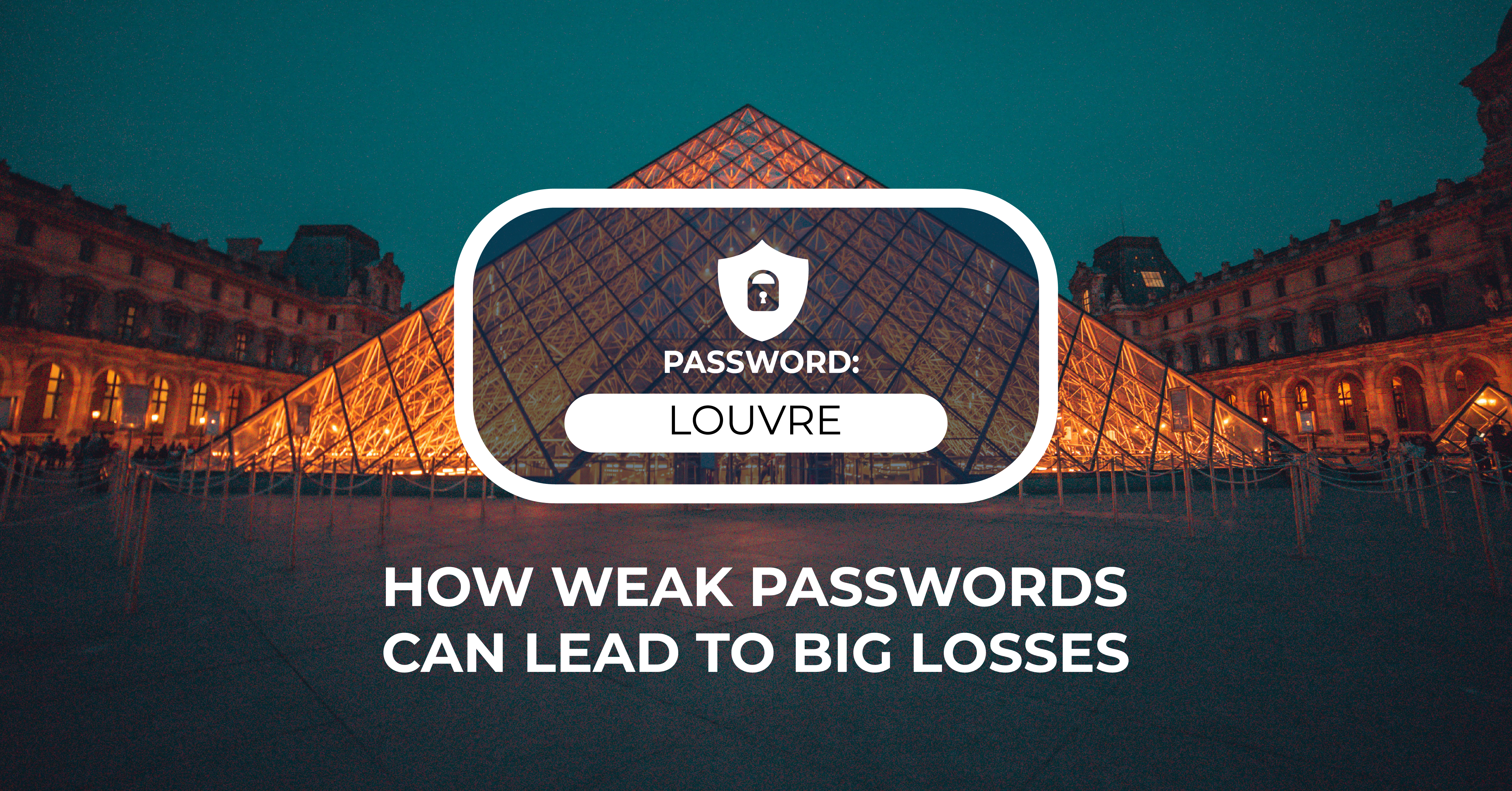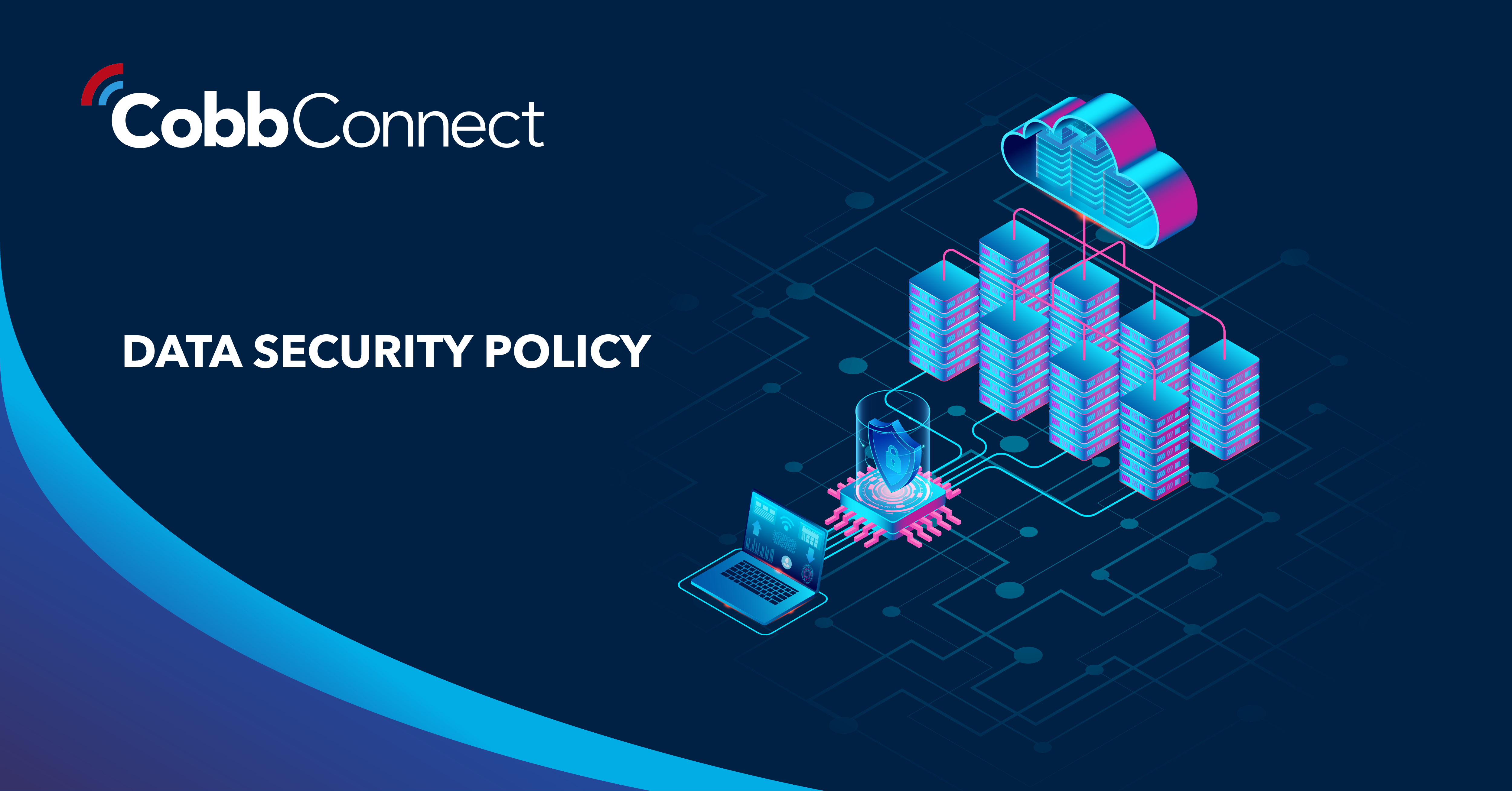2 min read
We “LOUVRE” Strong Passwords: How a Weak Password Can Lead to Big Losses
The Louvre’s password became the punchline of a global story after a heist revealed major security concerns for the museum. Reports say the password...

There’s a problem with printers: once a document has been printed, there is no physical security to stop an unintended party from taking it. And for a machine that produces so many sensitive documents, this is honestly an oversight.
However, employing a bouncer or bodyguard for your printer is a cost most organizations can’t absorb, let alone deal with the ensuing HR complaints.
Luckily, there are output management software options like uniFLOW or PaperCut that provide secure printing solutions.
If you’ve ever heard of mobile printing, you’re already familiar with the concept of secure print. However, there are many more methods of implementing secure print than just mobile print. Secure print is a solution that adds an extra, critical step to the printing process: user authentication.
Imagine you’re sitting at your desk and need to print a sensitive document, such as HR paperwork, that displays an employee’s personal identifying information. Without a secure print solution, once you’ve hit the “print” button on your laptop, the document is released for print.
It doesn’t matter how far away you are from the printer — if there are other employees currently at it, or even if the printer isn’t able to print. Without secure print, that document is in the printer’s queue. And once it can print, it will.
With sensitive documents, this can lead to a myriad of bad situations. An employee could accidentally (or purposefully) view a sensitive document, or one could be mistakingly thrown away.
Or, the person who printed the document could be forced to frantically search for paper to refill a tray so that, once the printer can print, the document doesn’t automatically start printing because it was stuck in the queue.
Essentially, it’s an uncontrolled mess.
With secure print, the employee would simply press “print,” walk to the printer, scan a card or input a code (or even use their smartphone to release the document), and then pick up the job after it’s done printing. Some secure print solutions even support features that prevent documents from being sent to a printer that can’t currently print, such as if there is a paper jam or it is out of paper.
Secure print can be implemented using the following methods:
While all of these options have their own pros and cons, they all accomplish the same thing: ensure your printed documents are secure and are only seen by those who were intended to see them.
As stated above, output management software like PaperCut or Canon’s uniFLOW offer secure print services. Still, there are a few considerations you’ll want to keep in mind:
Secure print can be configured for specific departments, individual employees, particular copiers, or as a company-wide practice. Therefore, it's important to carefully consider which members of your organization will truly benefit from secure print before implementing it.
While secure print reduces the stress of printing sensitive documents, the true benefit is having access to a reliable chain of custody for every document printed within your organization. For any office that works in a regulated industry, must protect the privacy of their clients, or faces tough competition, secure print services are an absolute must.
To learn more about output management, visit How Can Print Management Help Me Manage My Remote Printer Fleet?

2 min read
The Louvre’s password became the punchline of a global story after a heist revealed major security concerns for the museum. Reports say the password...

6 min read
Organizations of all sizes handle enormous volumes of data. Data is one of the most valuable assets of any organization.Unfortunately, it’s also a...

5 min read
In today’s digital-first workplace, your network is more than just a connection point; it’s the foundation of your operations. Whether your...